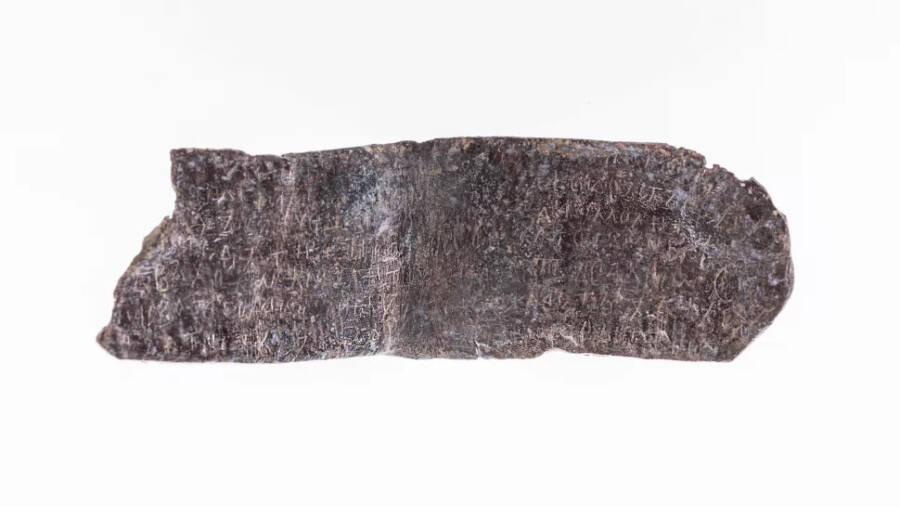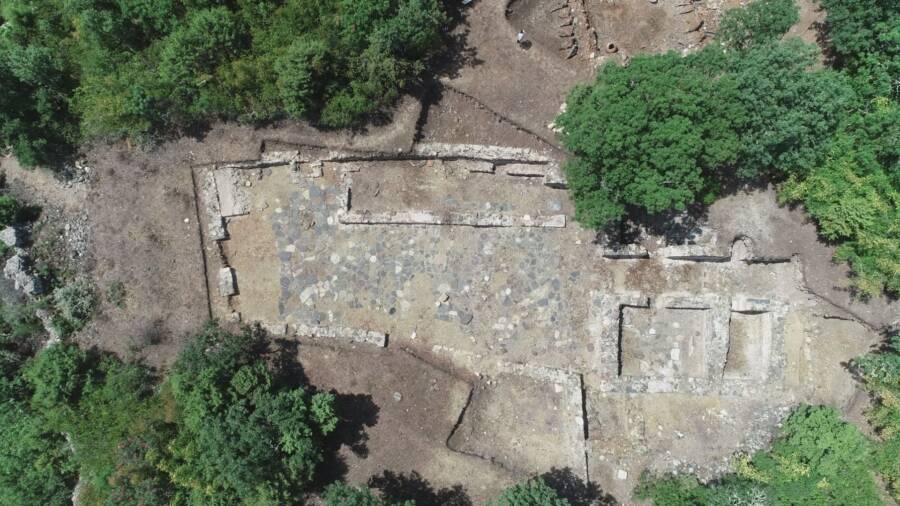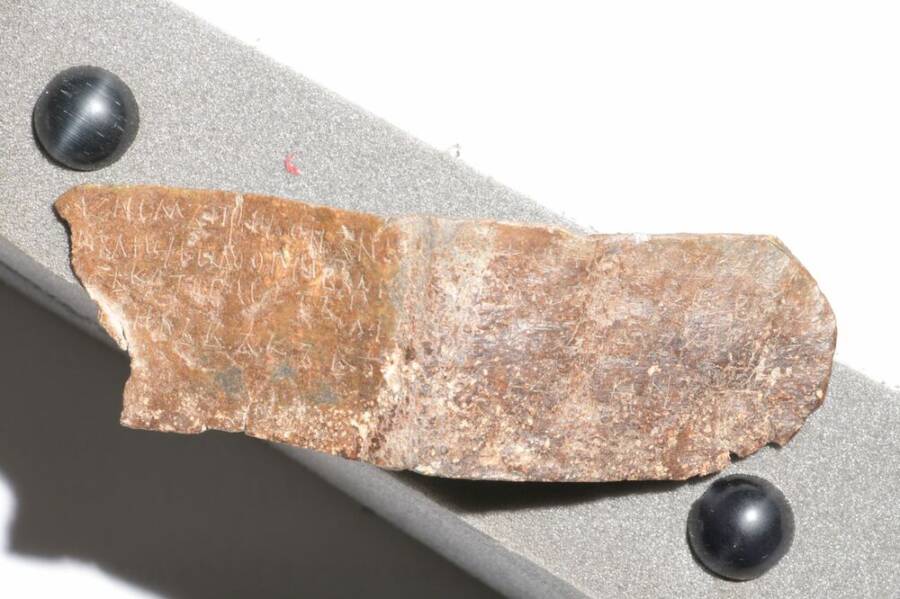The inscription on the plates dates back to Bulgarian military campaigns in the early 10th century and features a plea for the protection of St. Dimitar.

Ivaylo KanevPiece of the breastplate with perhaps the oldest Cyrillic texts ever found.
A 1,100-year-old inscription on a breastplate may be the oldest Cyrillic text ever found.
Several Eurasian languages, including Russian, Ukrainian, Serbian, and Bulgarian, employ the Cyrillic alphabet — and have since its creation in the late ninth century.
Given the alphabet’s age, scholars wish to collect artifacts to paint a picture of its evolution, and they think that the breastplate may be one of the most important discoveries yet.
A team of archaeologists discovered the artifact in the ruins of an old Bulgarian fortress near the Greek-Bulgaria border dating back to the time of Bulgarian Tsar Simeon the Great, who reigned from the 9th century to the early 10th century.
Chief curator of the National History Museum and finder of the breastplate, Ivaylo Kanev, told Live Science that the breastplate is composed of lead and meant to go over the chest. Most interestingly, the inscriptions on the plate likely served to protect the wearer.
“The text was written on a lead plate worn on the chest to protect the wearer from trouble and evil,” Kanev said.
The archaeologists found the artifact at the medieval fortress Balak Dere. Given its location, it is possible that the breastplate’s owner worked at the fortress under the order of Tsar Simeon, who led multiple military campaigns against the Byzantine Empire.

National History MuseumBalak Dere fortress, where archaeologists found the breastplate.
Although experts believe the breastplate probably belonged to a soldier, they still aren’t exactly sure of his importance.
In a statement to Radio Bulgaria, Kanev described this issue:
“But who was that person, was he a military man, an officer or a private? We can only guess. But the owner is not of the rank-and-file judging by the [well-constructed] text.”
Kanev believes that the unknown owner’s knowledge of religious doctrine points to his higher social status.
“That was something only the aristocracy could do. As far as we know, there was a special position in the Bulgarian church called exarch, whose job it was to [verify religious doctrine] and [oversee] church services. But we still have a lot of work to do on this text.”
So far, researchers have been able to identify the meaning of the inscription and names of certain individuals.
Interestingly, the breastplate seeks protection from St. Dimitar, an Orthodox military saint, and includes the names of two beggars: Pavel and Nikolai.
“[The owners of the breastplates] are asking St. Dimitar to intercede with God on their behalf and protect them from such-and-such calamities,” Kanev told Radio Bulgaria.
The archaeologist isn’t sure who Pavel and Nikolai were but thinks Nikolai likely participated in the garrison, settled in the fortress and was a relative of Pavel, Kanev told Bulgarian Post.

Ivaylo Kanev The unfolded Balak Dere breastplate.
Most likely, a military garrison brought the breastplate into the fortress sometime between 916 and 927 and left it there.
Because of this decision, researchers now have access to a priceless historical artifact that may reveal surprising information about Bulgaria’s history.
“This is a very interesting find and deservedly arouses interest,” Yavor Miltenov, a researcher with the Institute for Bulgarian Language of the Bulgarian Academy of Sciences, told Live Science. “We will need to see the full publication of the inscription and the context in which [researchers found it] before we can be certain of its date.”
Ultimately, if the theorized date is correct, researchers will have identified the oldest Cyrillic inscription ever discovered.
After reading about the discovery of the Cyrillic breastplate, dive into the story of Predjama Castle, the Slovenian military fortress built within a cave. Then, read the spine-chilling story of Houska Castle, the Czech fortress designed to keep things in rather than out.





